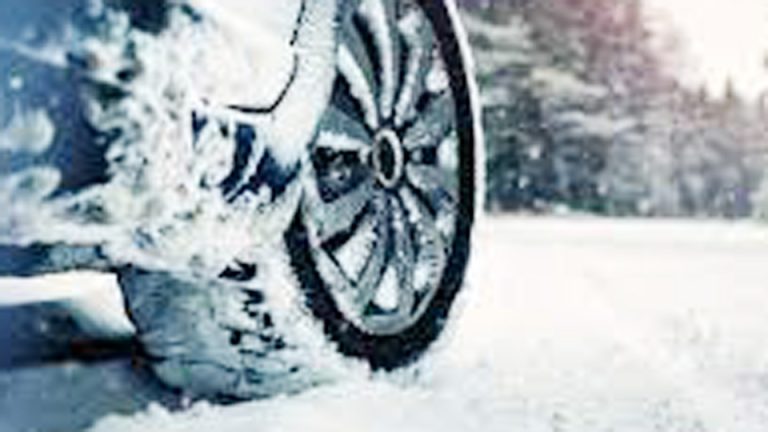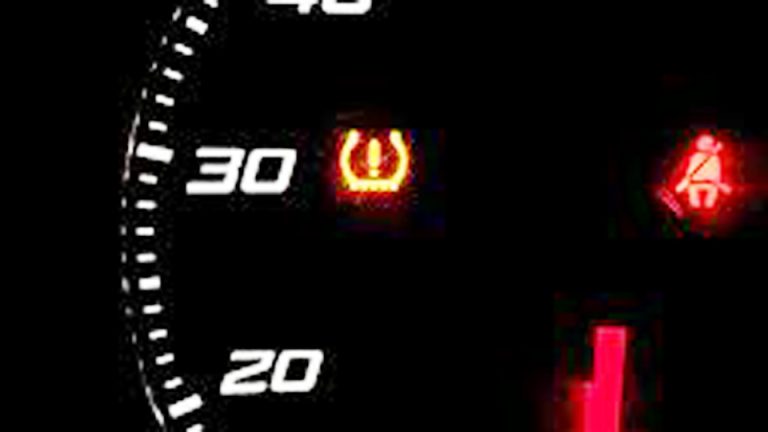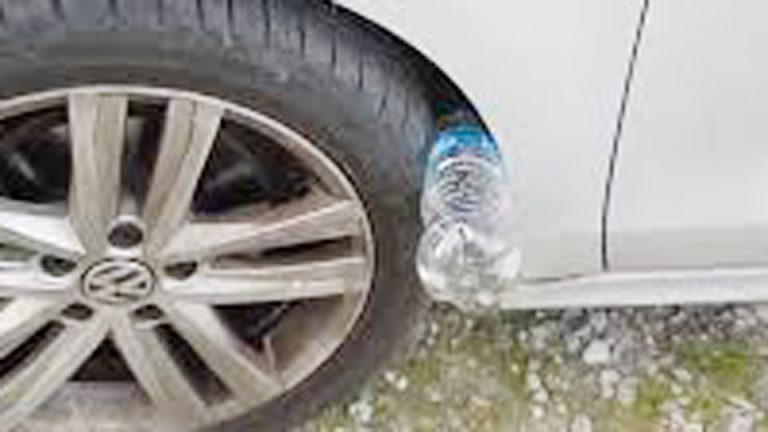I used to think tire pressure was just something you checked at oil changes—until I started hearing more about using nitrogen instead of regular air. At first, I was skeptical. I mean, air is free and everywhere, right? But after trying nitrogen in my own tires and comparing the difference over a few months, I became a believer.
My tire pressure stayed more consistent, I wasn’t topping them off every other week, and surprisingly, my fuel economy even saw a slight bump. If you’re wondering whether putting nitrogen in your tires is just hype or actually worth it, you’re not alone—I had the same question.

Image by firestonecompleteautocare
I’ll break down the real-life benefits I’ve experienced, along with what science and mechanics have to say about it. If you’re a daily commuter or someone who just wants fewer trips to the air pump, understanding the advantages of nitrogen might just change the way you take care of your tires.
Why Nitrogen in Tires?
Before we get into the advantages, let’s talk about why nitrogen even comes up as an option. Regular air is about 78% nitrogen, 21% oxygen, and a mix of other gases, with some water vapor thrown in. Nitrogen tire inflation uses pure (or nearly pure) nitrogen—about 93-99%—to fill your tires. The idea is that nitrogen behaves differently than air, offering benefits for tire performance and longevity.
I first heard about this when I took my Jeep Wrangler to a shop for new tires, and the tech swore by nitrogen for off-roading. Curious, I gave it a shot, and it got me thinking about how it could help my other vehicles too.
Science Behind Nitrogen in Tires
Nitrogen molecules are slightly larger than oxygen molecules, which means they leak through tire rubber more slowly. Plus, nitrogen is drier than regular air, so there’s less moisture inside the tire. Why does this matter? Moisture and oxygen can cause issues like corrosion or pressure changes, especially in extreme weather.
I noticed this with my Dodge Ram—regular air-filled tires seemed to lose pressure faster in the winter than my nitrogen-filled Civic’s tires. Understanding this science helped me appreciate why nitrogen might be a game-changer.
Advantages of Using Nitrogen in Car Tires
Over the years, I’ve used nitrogen in several cars and trucks, and I’ve seen some clear benefits. Here’s what I’ve learned about the advantages of putting nitrogen in car tires, based on my experience:
More Stable Tire Pressure
One of the biggest perks is that nitrogen maintains tire pressure better than regular air. Oxygen and water vapor in air can leak through tire rubber faster, especially in hot or cold weather. Nitrogen, being larger and drier, stays put longer.
When I switched my Honda Civic’s tires to nitrogen, I checked the pressure monthly and barely had to top them off, even during cold winters. With my air-filled Jeep, I was constantly adjusting pressure. Stable pressure means better handling, fuel efficiency, and tire wear.
Improved Fuel Economy
Underinflated tires increase rolling resistance, making your engine work harder and burn more gas. Since nitrogen keeps tire pressure consistent, your car runs more efficiently. I noticed this with my Ford F-150—after switching to nitrogen, I got about 1-2 more miles per gallon on highway trips. It’s not a huge jump, but over time, it adds up, especially if gas prices are high.
Longer Tire Life
Proper tire pressure reduces uneven wear, extending the life of your tires. Nitrogen’s stability helps keep tires at the right pressure, so they wear evenly. My neighbor’s Toyota Corolla had nitrogen-filled tires, and he got an extra 5,000 miles out of them compared to his old air-filled set. I saw similar results with my Civic’s tires—they lasted nearly 50,000 miles with minimal tread wear issues.
Reduced Wheel Corrosion
Moisture in regular air can corrode alloy wheels over time, especially in humid or salty environments. Nitrogen is dry, so it minimizes rust and corrosion inside the wheel. I noticed this with my Chevy Silverado, which I drive in snowy, salted winters.
After switching to nitrogen, the wheels looked cleaner inside when I changed tires, compared to my air-filled Dodge’s rusty rims.
Better Performance in Extreme Temperatures
Nitrogen is less affected by temperature changes than air. Regular air expands in heat and contracts in cold, causing pressure fluctuations. Nitrogen stays more stable, which is great for consistent performance. I took my Jeep off-roading in the desert, and the nitrogen-filled tires held their pressure better than my air-filled Mustang’s tires did in similar heat.
Safer Driving
Consistent tire pressure improves handling, braking, and traction. Underinflated tires can make your car feel sluggish or unsafe, especially in rain or snow. I felt more confident towing a trailer with my F-150 after switching to nitrogen—the tires stayed at the right pressure, giving me better control. Safety is the biggest reason I consider nitrogen for my vehicles.
Comparing Nitrogen vs. Regular Air
To help you decide if nitrogen is worth it, here’s a table comparing the two based on my experience:
| Feature | Nitrogen | Regular Air |
|---|---|---|
| Pressure Stability | High (leaks slower) | Moderate (leaks faster) |
| Moisture Content | Dry (no water vapor) | Contains moisture |
| Wheel Corrosion | Minimal | Can cause rust |
| Fuel Economy | Slightly better | Standard |
| Tire Life | Longer (even wear) | Shorter if pressure varies |
| Cost | $5-$20 per tire | Free at most pumps |
I’ve used both, and while air is fine for budget drivers, nitrogen’s benefits shine for long-term maintenance and performance.
How Nitrogen Gets Into Your Tires
Curious about the process? When you opt for nitrogen, shops use a nitrogen generator to purge regular air from your tires and fill them with pure nitrogen. I watched this at a shop with my Civic—they hooked up a machine that cycled nitrogen through the tire to remove oxygen and moisture.
It takes a few minutes per tire, and some shops charge $5-$10 per tire, though others include it free with new tires. You can also buy portable nitrogen tanks for DIY, but I’ve stuck with shops for consistency.
My Real-World Experience with Nitrogen
Let me share a couple of stories to show how nitrogen worked for me. When I got new tires for my Honda Civic, the shop offered nitrogen for $8 per tire. I was skeptical but gave it a try.
I checked the tire pressure monthly, and it barely dropped—maybe 1-2 psi in cold weather, compared to 5-6 psi with my air-filled Jeep. The Civic’s fuel economy improved slightly, and the tires wore evenly, lasting longer than expected.
On my Ford F-150, I tow a trailer for work, and tire pressure is critical for safety. After switching to nitrogen, I noticed the tires stayed consistent even on long hauls in hot weather. My air-filled Dodge, on the other hand, needed frequent top-offs during similar trips. The difference was clear—nitrogen made maintenance easier and driving safer.
Cost of Using Nitrogen in Tires
Is nitrogen worth the cost? Here’s what I’ve seen:
| Item | Estimated Cost | Notes |
|---|---|---|
| Nitrogen Fill (per tire) | $5-$20 | Varies by shop, sometimes free with new tires |
| Nitrogen Refill | $3-$10 per tire | For topping off pressure |
| Nitrogen Tank (DIY) | $200-$500 | For enthusiasts or frequent use |
| Regular Air | Free-$2 | Available at gas stations |
| Professional Tire Service | $50-$150 | Includes nitrogen, alignment, etc. |
I spent $32 to fill my Civic’s tires with nitrogen, and it paid off in less maintenance and better mileage. For my budget-conscious Dodge, I stuck with air to save cash.
Who Benefits Most from Nitrogen?
Not everyone needs nitrogen, but here’s who I think gets the most out of it:
Frequent Drivers: If you rack up miles, like I do with my F-150 for work, nitrogen’s stability saves time on pressure checks.
Towing or Hauling: Heavy loads demand consistent pressure. My trailer-towing trips with nitrogen-filled tires were smoother.
Extreme Climates: Hot summers or cold winters cause pressure swings with air. Nitrogen helped my Jeep in desert heat.
Performance Cars: Enthusiasts with cars like my Mustang benefit from precise handling with stable pressure.
Luxury Vehicles: Nitrogen keeps high-end wheels corrosion-free. My friend’s BMW looks pristine thanks to nitrogen.
If you’re a casual driver with an older car, like my Dodge, regular air might be fine.
How to Check and Maintain Nitrogen-Filled Tires
Using nitrogen doesn’t mean you’re off the hook for tire maintenance. Here’s how I keep my nitrogen-filled tires in top shape:
Check Pressure Monthly: Use a quality tire gauge. I check my Civic’s tires every 4-6 weeks, and they rarely need topping off.
Top Off with Nitrogen: If pressure drops, go to a shop with nitrogen. Mixing in air reduces benefits. I learned this when I accidentally used air on my F-150.
Inspect for Damage: Look for cuts, punctures, or wear. Nitrogen won’t fix a leaky tire. My Jeep had a slow leak that needed patching.
Rotate Tires: Rotate every 5,000-8,000 miles for even wear. I do this on all my cars, nitrogen or not.
Common Myths About Nitrogen in Tires
I’ve heard plenty of myths about nitrogen, so let’s clear them up:
Myth: Nitrogen Eliminates Pressure Checks: Nope, you still need to check pressure regularly, just less often. My Civic still needs occasional checks.
Myth: Nitrogen Boosts Performance Drastically: It helps with consistency, but don’t expect a race-car transformation. My Mustang didn’t suddenly become a Ferrari.
Myth: Air and Nitrogen Can’t Mix: You can top off with air in a pinch, but it dilutes nitrogen’s benefits. I did this once on my F-150 and noticed more pressure loss.
Myth: Nitrogen Is Only for Fancy Cars: It’s great for any vehicle, especially trucks or SUVs like my Ram.
When to Stick with Regular Air
Nitrogen isn’t for everyone. Here’s when I stick with air:
Budget Constraints: If you’re pinching pennies, air is free or cheap. I use air in my old Dodge to save cash.
Short Drives: If you don’t drive much, like my neighbor’s rarely-used Corolla, air works fine.
No Access to Nitrogen: Some areas don’t have nitrogen fill stations. My rural friend sticks with air for his Chevy.
Older Cars: If your car’s tires or wheels are worn, nitrogen’s benefits are less noticeable. My Dodge’s old rims didn’t justify the cost.
How to Get Nitrogen in Your Tires
Ready to try nitrogen? Here’s how I do it:
Find a Shop: Most tire shops or dealerships offer nitrogen fills, often free with new tires. I got it at a local shop for my Civic.
Ask About Purity: Ensure they use 93-99% pure nitrogen for maximum benefits. My Jeep’s shop confirmed 95% purity.
Check for Green Valve Caps: Many shops use green caps to show nitrogen-filled tires. My F-150’s tires have them, making it easy to spot.
Maintain with Nitrogen: Return to the shop for top-offs to keep the system pure. I do this every few months for my Honda.
Comparing Nitrogen in Different Vehicles
Nitrogen’s benefits vary by vehicle. Here’s what I’ve seen:
| Vehicle | Nitrogen Benefits | Notes |
|---|---|---|
| Honda Civic (2010) | Better mileage, less pressure loss | Great for daily commuting |
| Ford F-150 (2015) | Stable pressure for towing | Ideal for heavy loads |
| Jeep Wrangler (2008) | Consistent pressure off-road | Helps in extreme conditions |
| Dodge Ram (2005) | Minimal corrosion | Less noticeable on older wheels |
My Civic and F-150 saw the biggest gains, while my Dodge was fine with air.
What Not to Do with Nitrogen-Filled Tires
I’ve made mistakes with nitrogen tires. Here’s what to avoid:
- Don’t Mix Air Freely: Topping off with air reduces nitrogen’s benefits. I did this on my F-150 and regretted it.
- Don’t Skip Pressure Checks: Nitrogen leaks slower, but tires still lose pressure. I check my Civic monthly.
- Don’t Assume It Fixes Leaks: Nitrogen won’t seal a puncture. My Jeep needed a patch despite nitrogen.
- Don’t Overpay: Some shops charge too much. I shopped around for my Honda to get a fair price.
Practical Tips for Using Nitrogen in Tires
Here are some tips to get the most out of nitrogen:
- Shop Around for Fills: Look for deals—some shops include nitrogen free with tire purchases.
- Use a Quality Gauge: Accurate pressure checks are key. I use a digital gauge for precision.
- Keep Green Caps: They remind you and techs that your tires are nitrogen-filled.
- Combine with Maintenance: Check pressure when rotating tires or changing oil.
These tricks have made nitrogen a breeze for my vehicles.
Wrapping It Up
So, what is the advantage of putting nitrogen in car tires? From my experience with my Civic, F-150, and more, nitrogen offers stable pressure, better fuel economy, longer tire life, and reduced wheel corrosion. It’s especially great for frequent drivers, tow rigs, or cars in extreme climates.
While it’s not a must-have for everyone—my old Dodge runs fine on air—nitrogen can make maintenance easier and driving safer.
Give nitrogen a try if it fits your driving habits, and keep up with regular tire checks. Here’s to smooth rides, better mileage, and tires that last!
Frequently Asked Questions
What is the advantage of putting nitrogen in car tires?
Nitrogen keeps tire pressure stable, improves fuel economy, extends tire life, reduces wheel corrosion, and enhances safety, especially in extreme temperatures.
Is nitrogen better than regular air for car tires?
Nitrogen leaks slower, is drier, and maintains pressure better, but air is fine for budget drivers or short trips. I use nitrogen in my Civic for better performance.
How much does it cost to fill tires with nitrogen?
Typically $5-$20 per tire, sometimes free with new tires. Refills cost $3-$10. I paid $32 for my Civic’s four tires.
Can I mix nitrogen with regular air in my tires?
You can, but it reduces nitrogen’s benefits. I accidentally mixed air in my F-150, and pressure loss increased.
How often should I check nitrogen-filled tire pressure?
Check monthly, though nitrogen leaks slower. I check my Honda’s tires every 4-6 weeks to stay on top of it.




